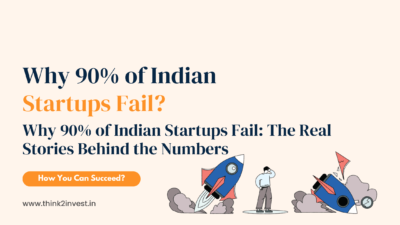When startups or growing businesses need money to expand, one popular way to get funds is through equity funding. Let’s break down what equity funding is, how share valuation works, and show some examples to make it crystal clear!

🏢 What is Equity Funding?
Equity funding (or equity financing) means a business sells part of its ownership (called “equity”) to investors. In return, these investors provide money to help the business grow.
👉 Unlike loans, you don’t need to pay back this money directly.
👉 However, you’ll share future profits (and control) with the investors.
📊 Example of Equity Funding
Imagine you’re starting a company called GreenTech Solutions, which makes eco-friendly energy devices.
- You need $1 million to build new products and expand.
- An investor offers $1 million, but wants 20% ownership in your company.
This is equity funding: you get the money, and the investor owns a piece of the company!
💡 Why Use Equity Funding?
✅ No loan repayments: You won’t have to pay back the money like a bank loan.
✅ Access to expertise: Investors often bring experience and connections.
✅ Shared risk and reward: Investors benefit if the company succeeds.
❌ Downside: You’ll give up some ownership and decision-making power.
💸 How Share Valuation Works
Before you sell part of your company, you and investors need to agree on how much your company is worth. This is called the valuation.
There are two key types of valuation:
1️⃣ Pre-money valuation: Your company’s value before new investment.
2️⃣ Post-money valuation: Your company’s value after new investment.
🧮 Example of Pre-money and Post-money Valuation
🏦 Pre-money and Post-money Valuation
Before raising funds, companies agree on a valuation before investment (pre-money). After investment, you add the new money to calculate the post-money valuation.
Example:
- Pre-money valuation: $4 million
- New investment: $1 million
Post-money valuation:
$4 million (pre-money) + $1 million (investment) = $5 million (post-money valuation)
Investor’s ownership share: $1 million / $5 million = 20%
📚 Methods to Calculate Valuation
There are 3 common ways to figure out a company’s valuation:

1️⃣ Comparable Company Analysis
What it is: Look at similar businesses and see how they are valued.
Example:
- Similar green tech companies are valued at 5× revenue.
- GreenTech Solutions annual revenue: $500,000.
- Estimated valuation: 5 × $500,000 = $2.5 million.
2️⃣ Discounted Cash Flow (DCF)
What it is: Estimate future cash flows and calculate their present value.
Example:
- Year 1 cash flow: $200,000
- Year 2: $400,000
- Year 3: $600,000
- Discount rate: 10%
Valuation: Around $1 million.
3️⃣ Market Size and Potential
What it is: Estimate total market size and potential share.
Example:
- Green tech market: $10 billion
- Capture 0.1% of market: $10 million revenue
- Similar companies valued at 3× revenue: 3 × $10 million = $30 million
🔢 Valuation Summary
| Method | Estimated Valuation |
|---|---|
| Comparable Companies | $2.5 million |
| Discounted Cash Flow (DCF) | $1 million |
| Market Size / Potential | $30 million |
As you can see, different methods give different results! Usually, investors and founders negotiate and settle on a fair number that works for both sides.
🔑 Key Takeaways
✅ Equity funding is selling part of your company for growth money.
✅ You don’t repay like a loan, but you share future success.
✅ Valuation is key — it decides how much ownership you give away.
✅ Use different methods to estimate valuation: comparable companies, DCF, market potential.
🚀 Final Thoughts
Equity funding can help you take your business to the next level — just remember that it means sharing ownership with others. Take time to understand how valuation works so you get a fair deal and build a bright future for your company!





